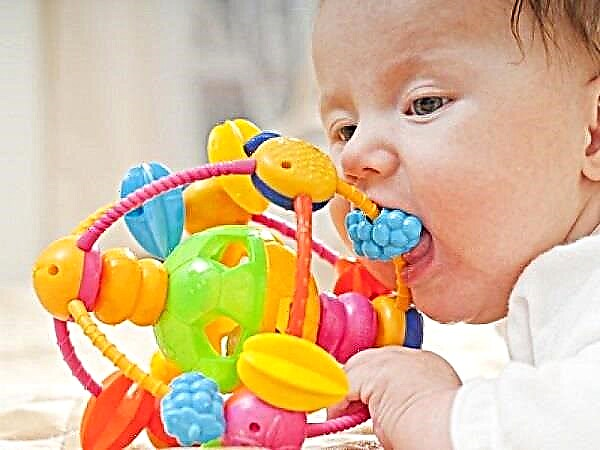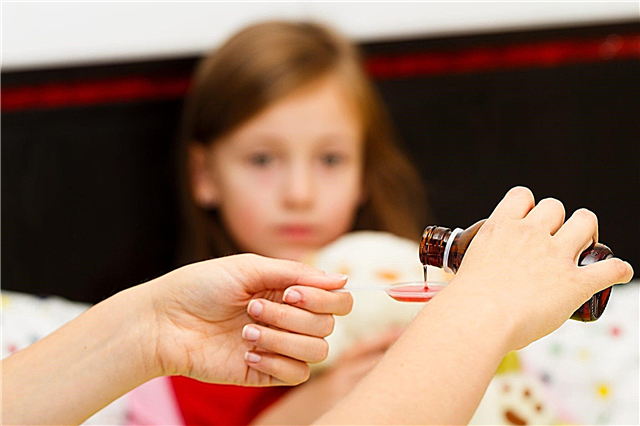An ECG in a child is one of the most informative studies of children, starting from the neonatal period. Parents should know how it is carried out, why this procedure is needed.

EKG baby
Features of a pediatric ECG
ECG is an abbreviation for the word electrocardiogram. This is a recording that shows the beating of the heart, its rhythm. This indicator is removed using a special electrical device - a cardiograph.
The most important feature of the need for this procedure in childhood is the high risks of pathologies and the ability to quickly track them. The heart is the motor of the human body. If, for some reason, it starts pumping blood poorly, this will lead to disruptions in the work of all other internal organs. The case can go up to death. With a timely examination, the violation will be noticed in time and measures will be taken. The problem can be solved with minimal complications.
Note! Often mothers are afraid that their child's heart is beating too fast. This is normal - the norm is from 130 to 170 beats per minute, which is 2-3 times faster than in adults.
Indications for
An ECG of the heart is prescribed for a child in case of such complaints:
- Pain in the sternum (more often on the left, but it can also give on the right);
- Dizziness, frequent weakness, loss of consciousness;
- Reduced immunity (against the background of everything else);
- Swollen arms, legs, eyelids, face.

Pediatrician listens to the child's heart
Also, during the examination, the doctor may detect a heart murmur. This is also an indication for research. Another ECG is mandatory for children in the first year of life at least three times.
Why do children under one year old
A child's cardiogram is mandatory in the first days after childbirth, as well as in the month of life. This is due to the fact that the incidence of congenital heart defects has increased. During the initial examination in the maternity hospital, the pathology can be viewed if the deviation is not strong, therefore, a control study must be done a month.
Further, an ECG is assigned to the child per year. This is the final check. It is these first 365 days of life that are among the most important in terms of physical development. Therefore, at their end, the heart is necessarily checked again.

ECG is done to the baby
Do I need to prepare
If a mother wants to know how an ecg is done per year to a child, whether any preparation is needed, then she need not worry - no special preparation is required. You will need to take a diaper and napkins with you, as well as make sure that the baby is at least relatively calm. The same goes for the newborn ECG procedure. Whether to feed the baby before this, the mother decides - there are no clear indications on this matter.
How do ECGs for children
Many parents are afraid of the procedure, so they refuse it in advance. In fact, there is nothing wrong with it. It is absolutely safe and painless. An ECG for a small baby is no different from an ECG for an adult. They do it like this:
- Special sensors are installed on the patient's body. They are pre-disinfected. Special suction cups are placed on the chest, and clamps are placed on the arms and legs. Nothing crushes or squeezes anywhere, so you don't have to worry about a crumb.
- When the device is turned on, the sensors read the electrical potentials that the heartbeat itself creates.
- These pulses are sent from sensors to a special device - a cardiograph. He creates the result of the study - a zigzag path on a long tape.
This tape is what doctors will study to understand if the baby's heart is working properly.
During the procedure, the child should be undressed to panties or a diaper, laid on his back (do not examine in an upright position). The research itself takes little time. It usually takes a couple of minutes. If there are any problems, the cardiogram is removed within 15 minutes.

Electrocardiography of a newborn
If a child is afraid
EKGs in newborns and older children can be taken, but sometimes this is complicated by childhood fear. Uncertainty scares, and the baby may cry at the sight of an unknown doctor, incomprehensible objects, prohibitions to move during the study. To reduce the likelihood of such a reaction, you need to do this:
- The child, who already understands the meaning of what was said, is told in advance about the purpose of the visit. Of course, mentioning that it is absolutely not painful and not scary.
- The parent should be calm. Children are great empaths and easily read the state of an adult.
- The baby can be distracted, singing songs to him, telling him stories. Anything to preserve his property and calm mood. By the way, you can give a bottle - sucking will calm the baby.
ECG decoding
The ECG result is a long tape with a graph of the heartbeat rhythm.

Example of an ECG graph
There are also marks in the form of letters and numbers. It:
- T is the period in which the ventricles of the heart relax.
- P - here the atria are tense and contracted in turn.
- Q, S - this shows the excitation of a special film between the heart ventricles.
- R - the ventricles themselves are excited here.
Doctors especially carefully evaluate the following indicators:
- PQ interval - it demonstrates how quickly the impulse passes from the atrium to the ventricles, that is, it shows the atrial rhythm in the child. For example, supraventricular arrhythmia can shorten it.
- Sinus rhythm is how rhythmically the heart contracts, how harmoniously all its parts work.
- Heart rate.
- A source of excitement. The signal must travel from the sinus node further along the nerves. Sometimes there is a migration of the pacemaker to other areas of the heart, for example, to the atrial node.
- Heart conduction. The impulse goes through all the parts in the correct order without changing it.
- Electric axle. Here they look mainly at the Q, R, S waves. So you can find, for example, an incomplete blockade of the left or right bundle branch. Axis deviations also occur with ventricular hypertrophy.
Norms of a cardiogram for children
| Heart rate | Infants under 3 years old 100-110 beats per minute | Kids 3-5 years old 100 beats per minute | Children 6-8 years old 90-100 beats per minute | Children 9-12 years old 70-85 beats per minute |
|---|---|---|---|---|
| QRS interval | 0.06-0.1 second | |||
| P | no more than 0.1 seconds | |||
| PQ | up to 0.2 seconds | |||
| QT | up to 0.4 seconds |
Attention! Only a doctor can decipher any data from the ECG correctly. Parents should not do this on their own.
The most frequent deviations
If a child has a bad EKG, it means that something is developing wrong somewhere. It is very good that the pathology was detected as early as possible, then it is easiest to eliminate it. Most often, the following deviations occur:
- Extrasystole. The heart is beating unevenly, the rhythm is ragged. Without any load, influence from the side, the beating sometimes accelerates, then generally freezes. This happens when the conduction of the heart impulse is impaired.

An example of extrasystole
- Arrhythmia. Here the sinus rhythm is broken, when the impulses come either slowly or quickly. Sometimes this deviation simply accompanies growth and development and does not indicate anything bad. In 30% of cases, arrhythmia indicates violations, for example, with delayed cardiointervals - up to 0.6 seconds. An accurate diagnosis should be carried out by a pediatrician, followed by a cardiologist.
- Baricardia. This is when the heart beats too slowly. It is not considered a violation if the patient sleeps during the study (which sometimes happens with children).
- Tachycardia. Here, on the contrary, the heart beats too fast. If this is after stress (physical or emotional), then this is not a pathology. If tachycardia occurs on its own, it is dangerous. Heart rate should not be higher than the following indicators.
The upper limit of the normal heart rate
| Newborn | 170 |
|---|---|
| Infants in the first year of life | 160 |
| Up to 2 years old | 155 |
| 4-6 years old | 125 |
| 6-8 years old | 118 |
| 8-10 years old | 110 |
| 10 to 12 years old | 100 |
A healthy baby's heart is one of the most important keys to an adult's health. That is why parents should take a responsible approach to the issue of his examination. If deviations are found, follow all the doctor's recommendations.



